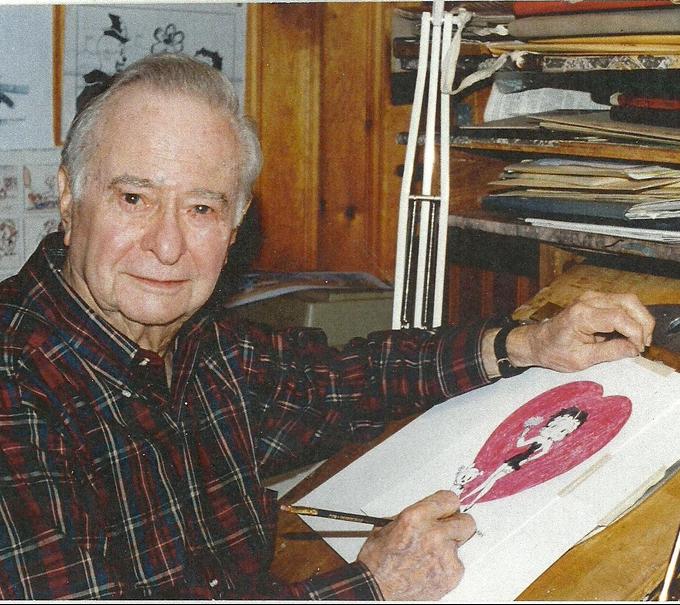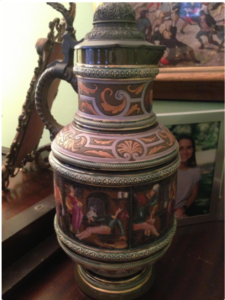
Telling the story of a life can be a daunting task. LifePosts makes it easy to publish a beautiful and interactive memorial, celebration or personal history – but making the decisions of what to include and where to feature them is up to the storyteller.
To give you some ideas on how to approach it, we turned to one of our most prolific storytellers, Robert Waldman. Waldman is an award-winning producer of documentaries and non-fiction television for A&E, Discovery, History Channel, Travel Channel and TV Land, among others.
We asked him to share the secrets behind his approach on creating fascinating LifePosts for Jerry Lewis, Jackie Gleason, and his own father, cartoonist Myron Waldman.
“FOR ME, IT ALL BEGINS WITH TONY BENNETT”
by Rob Waldman
Twenty years before LifePosts was ever created, Danny Bennett gave me the idea I think of every time I begin a new LifePost.
Danny is the son and manager of singer and living legend, Tony Bennett.
In 1995, I was just about to produce an A&E Biography of Tony, when at the first meeting, Danny proclaimed, “This show should look like something that could be on exhibit at the Smithsonian.”

By heeding that order, the show looked terrific. Of course, Tony Bennett deserves to be honored in the Smithsonian.
But here’s the thing about a LifePost: anyone can create a multimedia exhibit of Smithsonian quality about whoever they want to celebrate or commemorate.
I kept that thought in mind when I created my first LifePost, which was about my Dad.
Before I began, I asked myself several important questions that set the stage for a LifePost that has received compliments from friends, family and total strangers:
- What would Dad have enjoyed?
- What would the introduction to such an exhibit be like? How would I introduce who he was and what he did to someone who had never met him and still be interesting to everybody who knew him?
- What would a museum exhibit of his life include? What stories, pictures and memorabilia would it feature?
Well, Dad would have wanted something funny, nothing maudlin. Keeping that in mind narrowed down the number of stories flitting through my mind to just the upbeat ones.

I wanted this LifePost to reflect the stories he told me, and also the stories he told audiences through his work. Guided by my memories of Dad’s favorite stories, I found my starting point.
Here’s how my Dad’s LifeStory began:
Sometime in the mid-‘60s, my dad was drawing picture after picture of a fly with superpowers while a 4-year-old neighbor watched him carefully. After a few minutes, the little boy said, “Is that all you do all day?”
Dad said, “Yep.”
The kid replied, “Well, my daddy works.”
What my dad did was special. As one of the legends of the Golden Age of Animation, he brought some of the biggest stars in movies and TV to life with just a pencil. Betty Boop, Popeye, Superman, Little Lulu – and many, many more.
Yes, my father worked on very famous characters, but except to a handful of animation historians and buffs, he wasn’t really famous himself.
Creating a LifePost about my Dad allowed me to elevate his life to the level of the stars he brought to life. My introduction, I hoped, would hook audiences. But just like at a museum, looking at the little artifacts of his life is what would keep them engaged.

Unlike a traditional obituary, a LifePost is an opportunity to share a more complete portrait of the person you’re honoring. A newspaper article might say your parents were married in 1948 and leave it at that. With a LifePost, you can tell the story of how they met, how they got engaged, whatever. And you can post pictures, their wedding invitation, even home movies of the wedding to go along with the story.
I did that with Dad. Using photos and video of not just his life and his work, but also of things like the objects that inspired him, I think Dad’s LifePost reflected a bit of his mind – and his place in history.
That’s why it’s fun to think of creating a LifePost as putting together an online multimedia museum exhibit about someone you love. Chances are none of us will ever get a display about ourselves in the Smithsonian.
But getting a LifePost can come close.


